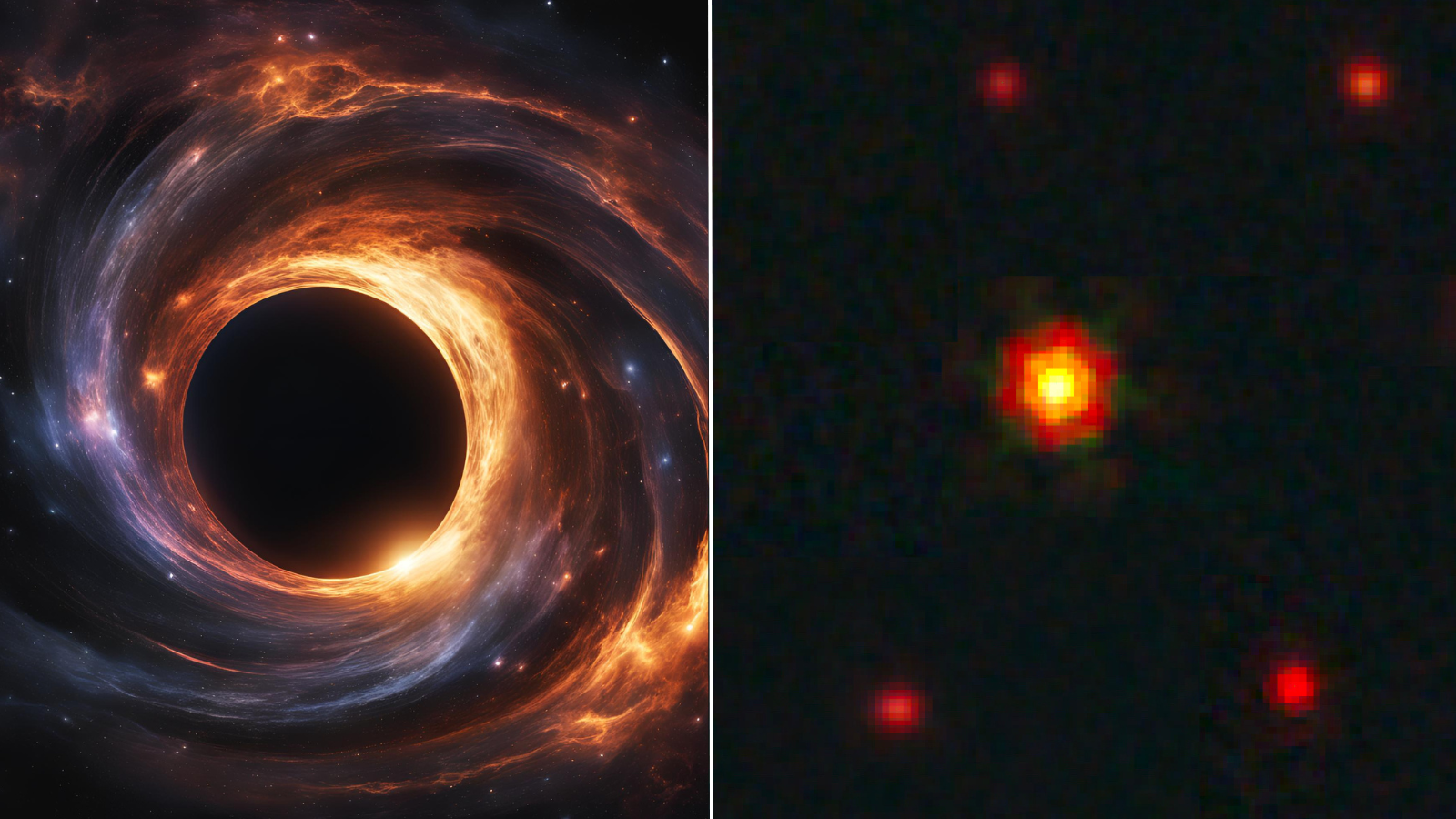Charon: Pluto's dwarf planet partner
As the gatekeepers to the Kuiper Belt, Charon and Pluto are a unique double dwarf planet system.
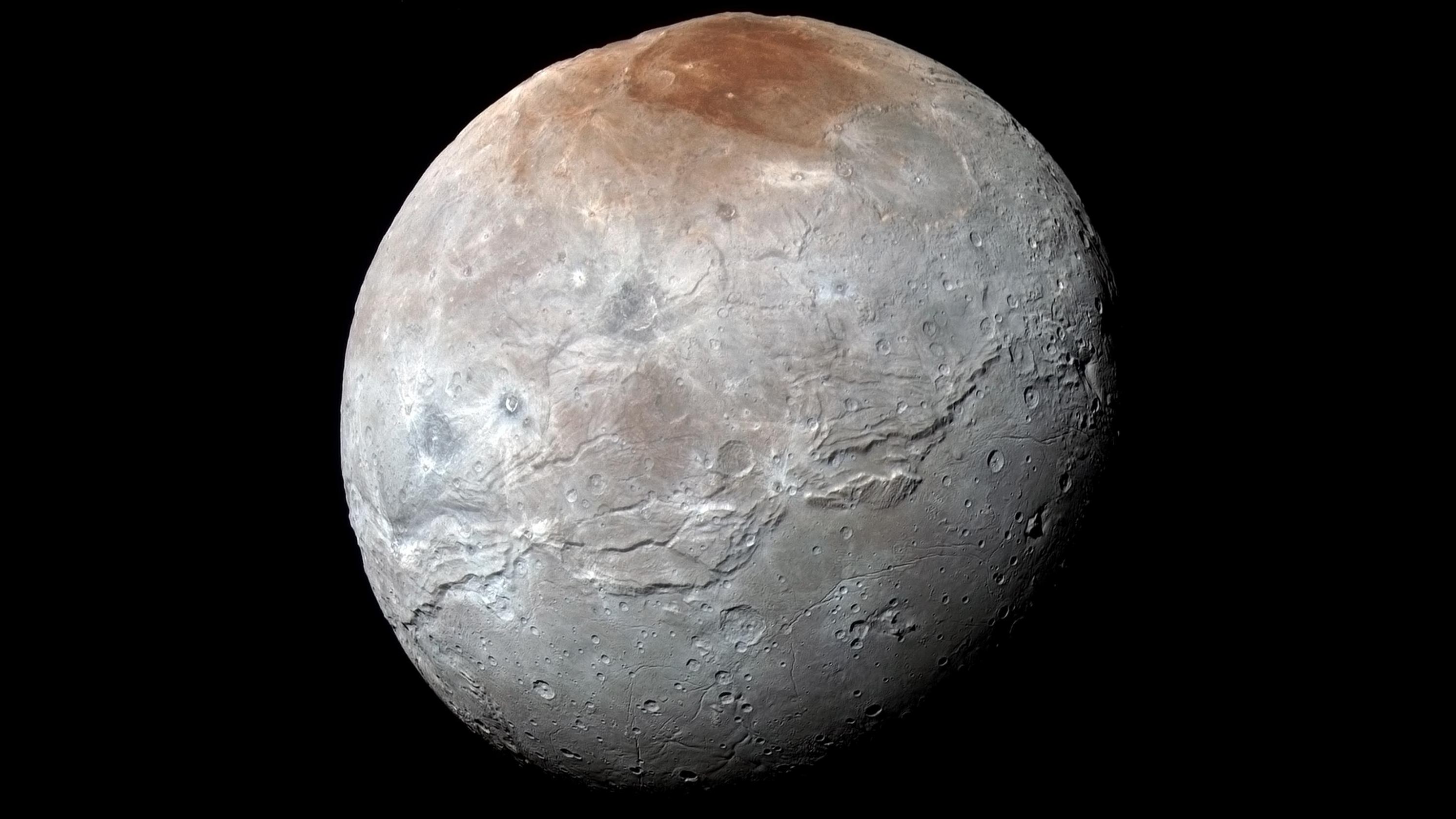
Charon is the largest moon of the dwarf planet Pluto, but calling it a moon is really a misnomer; Pluto and Charon actually form a binary system. Whereas a moon usually orbits a planet, both Pluto and Charon orbit a point in space between them — their common center of mass. The other four moons in the system — Styx, Nix, Kerberos and Hydra — orbit both Pluto and Charon.
The center of mass is located between Pluto and Charon because there's not a huge difference in their diameters and masses, so they balance out somewhat. Pluto has a mass of 1.3 x 1022 kilograms and a diameter of 1,477 miles (2,377 kilometers), whereas Charon has a mass of 1.6 x 1021 kg and a diameter of 753 miles (1,212 km).
The two objects are only 12,176 miles (19,596 km) apart. Pluto and Charon are tidally locked to each other, meaning they always show the same face to each other, and they orbit their common center of mass every 6.4 days.
Charon FAQs
What is special about Charon?
Charon is unusual because it is the largest moon in the solar system compared with its parent body. In fact, Charon and Pluto are so similar in size that they are considered a double dwarf planet system, not a planet and moon.
Is Charon bigger than our moon?
Charon is smaller than Earth's moon. In fact, Pluto is smaller than Earth's moon, too. Charon is 753 miles (1,212 km) across, Pluto is 1,477 (2,377 km) wide, and Earth's moon is 2,159 miles (3,475 km) in diameter.
How did Pluto obtain Charon?
Charon probably formed as the result of a giant impact on Pluto, similar to how Earth's moon formed from a giant impact on our planet.
When was Charon discovered?
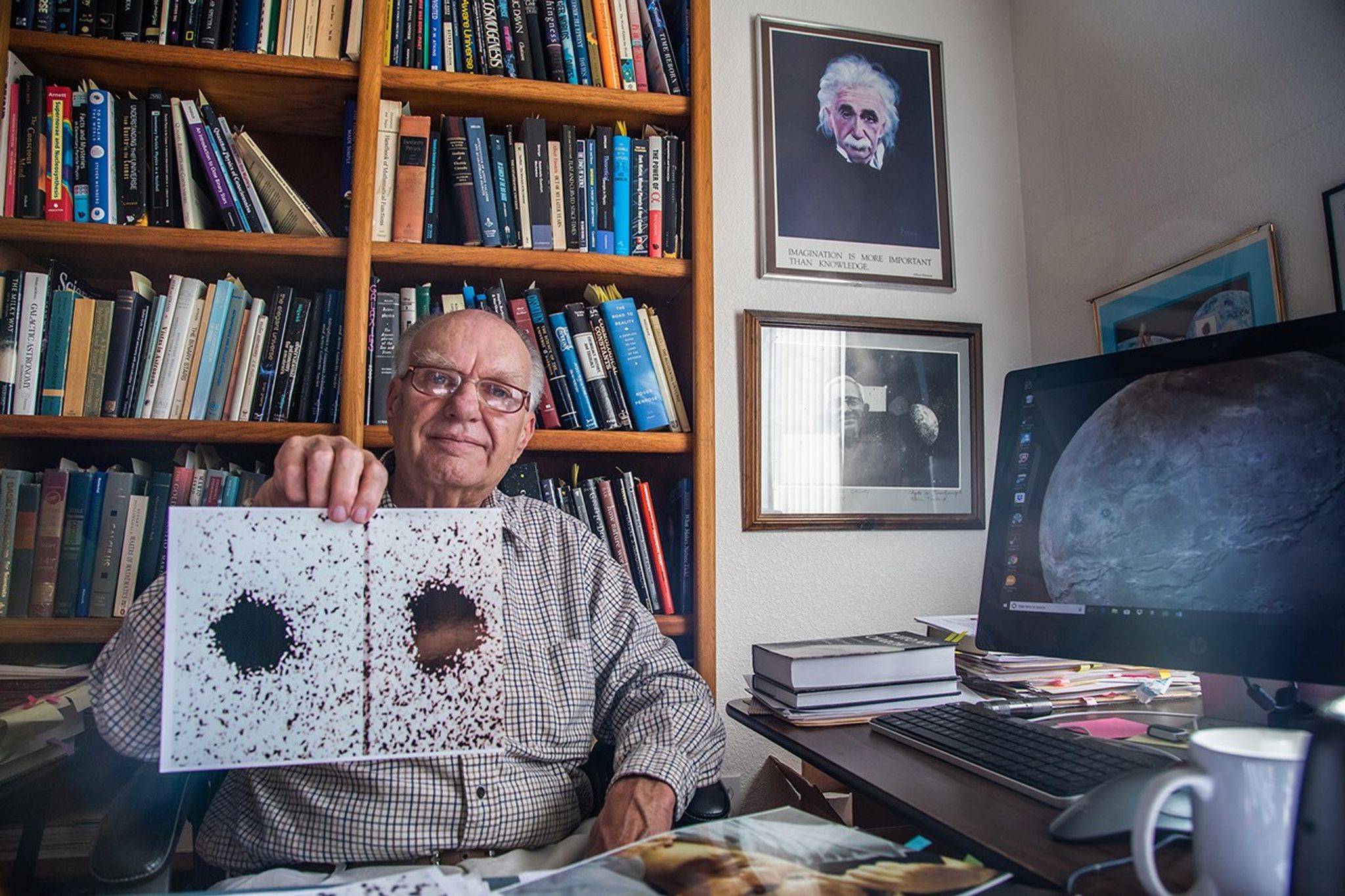
Charon was found on June 22, 1978, by astronomer James Christy of the U.S. Naval Observatory (USNO). Christy had been imaging Pluto with the USNO's 1.5-meter (4.9-foot) telescope. Because Pluto is so far from the sun — more than 3 billion miles (4.8 million km), on average — it appears as little more than a blob of light through even the largest ground-based telescopes. But Christy noticed something odd: a bulge or elongation on the side of Pluto. This was Charon, but the USNO telescope was unable to resolve the two objects clearly. It was not until 1994 that the Hubble Space Telescope produced the first image of both Pluto and Charon with clear space between them.
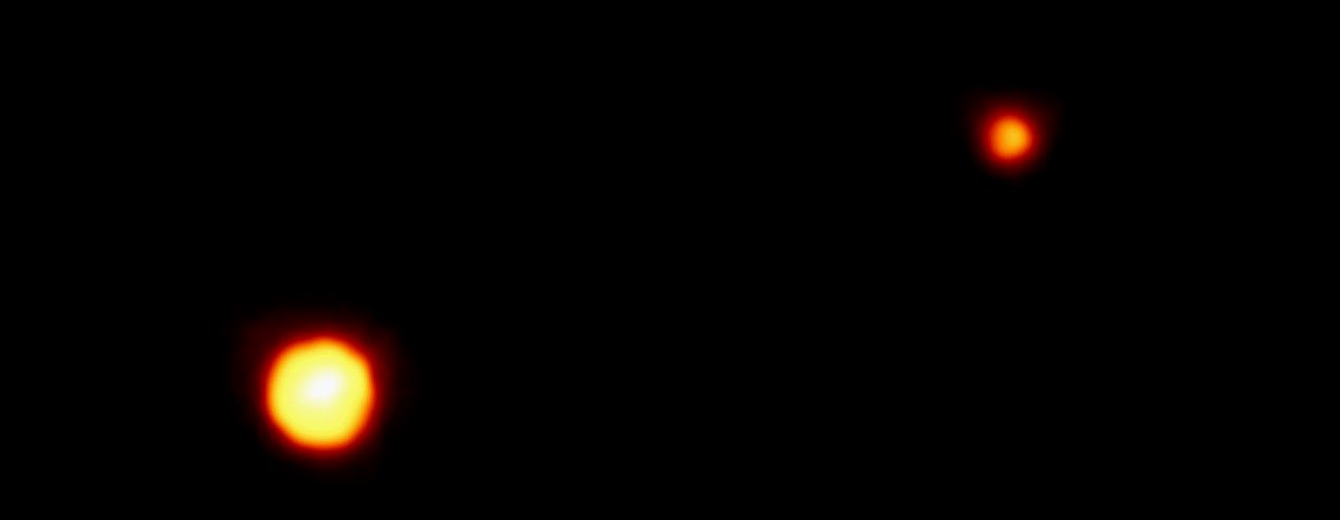
Christy's discovery was important because the existence of Charon provided a way to accurately measure some of Pluto's characteristics. Pluto had been discovered by Clyde Tombaugh in 1930, but not much was known about it; its diameter and mass could only be guessed at the time. For example, after its discovery, astronomers thought Pluto might have a slightly smaller mass than Earth. This was revised downward in a 1968 study that suggested that Pluto's mass was 18% of Earth's. Knowing Charon's orbital period meant that astronomers could calculate good estimates of both objects' masses. We now know Pluto's mass is 0.2% of Earth's.
Where does Charon's name come from?
Christy suggested the name Charon after the mythological ferryman who carried souls across to the underworld.
In Roman mythology, Pluto was the god of the underworld where the souls of the dead traveled. To reach the underworld, these souls had to cross the Styx and Acheron rivers, which separated the world of the living from the world of the dead. They were aided by Charon, the ferryman who would take the souls across the rivers. However, the souls had to pay Charon for the transport he provided; the dead would be buried with a coin to give to Charon. Those lacking payment had to find their own way across the rivers.
Breaking space news, the latest updates on rocket launches, skywatching events and more!
Styx is also the name for one of the smaller moons in the Pluto system, and the others (Nix, Kerberos and Hydra) also have connections to the underworld mythology.
According to NASA, Christy also chose the name Charon became the first four letters were the same as his wife's Charlene.
What is Charon made of?
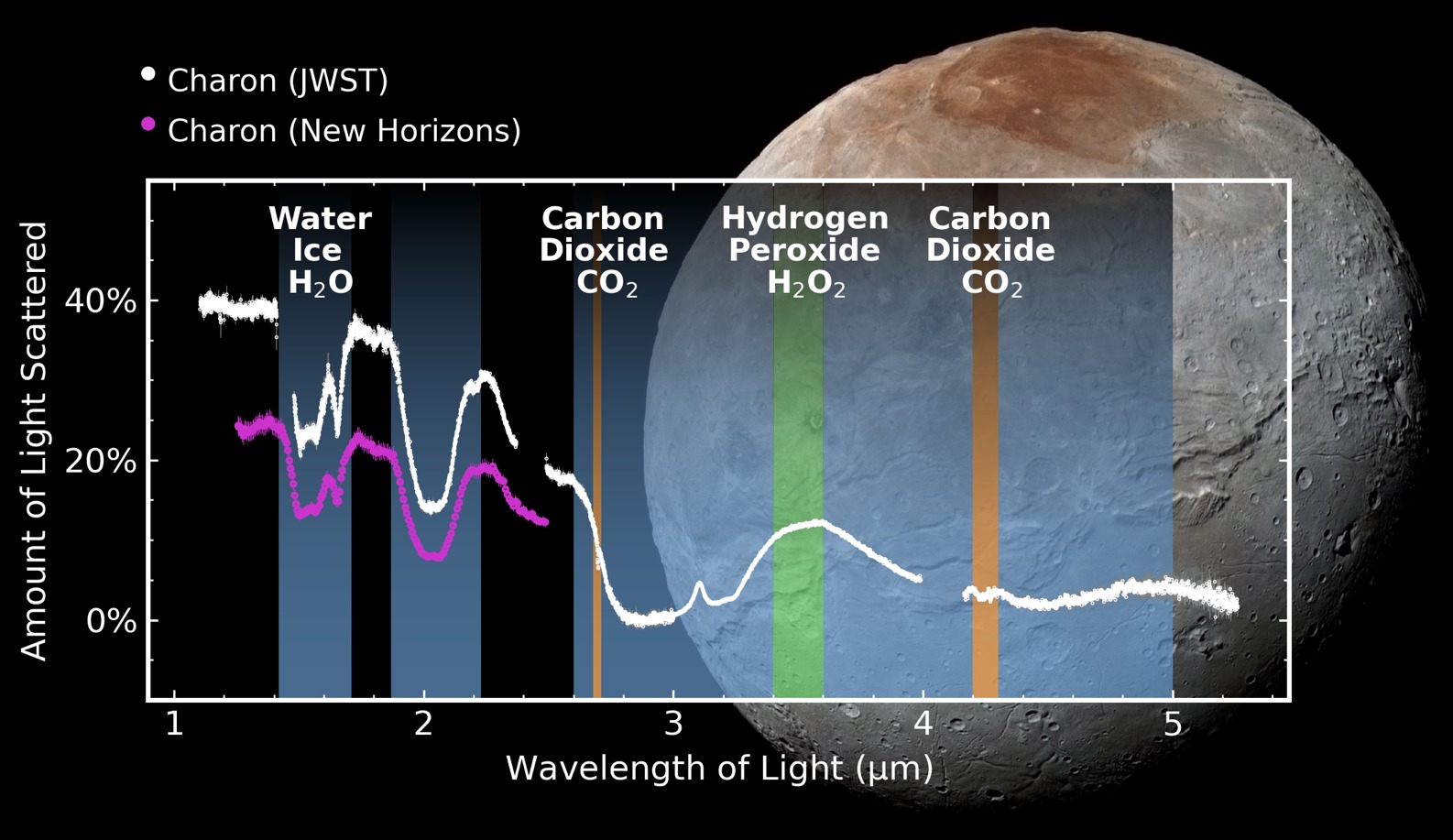
Charon is made mostly of water ice. When the New Horizons spacecraft flew past Pluto and Charon in 2015, it imaged only one side of Charon. It found that Charon's north polar region, called Mordor Macula, is red. In fact, the dark-red hue begins north of 45 degrees latitude. The origins of this coloration are mysterious since no similar feature is seen on any other icy object in the solar system.
One possibility is that Pluto and Charon's long, 248-Earth-year orbit and Charon's tilt of 122 degrees to the ecliptic plane mean that the northern latitudes go decades without seeing any sunlight. Thus, they can act as a cold trap for organic molecules such as methane, which can result in that red color.
It's no surprise that there's a lot of ice on Charon; the temperature there has been measured at between 33 and 47 degrees above absolute zero. That's minus 400 to minus 375 degrees Fahrenheit minus 240 to minus 226 degrees Celsius.
Geologically, the surface of the hemisphere seen by New Horizons can be split into two areas, separated by a complex of ridges and canyons. One of these, Serenity Chasma, is 31 miles (50 km) wide. To the north is rugged terrain covered in craters and troughs up to 4 miles (6 km) deep. This area includes the 143-mile-wide (230 km) Dorothy Gale crater, one of Charon's largest craters. The south is covered in smoother plains, including one called Vulcan Planitia, which may be an ice-filled impact basin.
Besides copious water ice, ammonia hydrate ice was previously detected on Charon by the OSIRIS spectrometer on the W. M. Keck Observatory in Hawaii. More recently, the James Webb Space Telescope detected carbon dioxide and hydrogen peroxide ice on the surface of Charon. Scientists' interpretation is that the carbon dioxide comes from inside Charon and has been unearthed by impact events. The hydrogen peroxide is thought to have formed on Charon when cosmic rays and ultraviolet light from the sun reacted with water ice, with the chemical reactions breaking down water molecules (two hydrogen atoms and one oxygen atom) and the hydrogen and oxygen atoms recombining.
An initial analysis of New Horizons' observations of Charon in 2015 found no evidence for an atmosphere or, more specifically, an exosphere, which is a very thin atmosphere.
How did Charon form?

Based on the number of impact craters relative to the expected impact rate, we know that Charon is over 4 billion years old. But exactly how old is it? And did it form at the same time and in the same way as Pluto, or through some other process?
The most popular theory is that Charon formed from the debris of a giant impact on Pluto, similar to the giant impact hypothesis for how Earth's moon formed. There are two possibilities for how this might have played out. One is a "hit-and-run" model, in which Charon itself was the object that struck Pluto, and it kicked up some debris and accreted that material to grow while becoming gravitationally bound to Pluto. The other hypothesis is the "graze and merge" model, in which the original impactor merged with Pluto in the collision while ejecting a large amount of material that then formed a ring around Pluto and condensed into Charon within hundreds of days. Which of these models is correct is still unclear.
Then, a subsequent impact between Charon and a smaller Kuiper Belt object could have produced the debris that formed the system's four small moons: Nix, Styx, Kerberos and Hydra.
Additional resources
Learn about the New Horizons mission that flew past Pluto and Charon in 2015 and is still exploring the outer solar system.
Astronomers have been plotting a return of New Horizons to Pluto, with a potential new mission called Persephone. You can see NASA's concept for the potential mission here.
After visiting the Pluto-Charon system, New Horizons carried onward and flew past a Kuiper Belt object known as Arrokoth, which you can read about on NASA's website.
Bibliography
Dionysios Gakis and Konstantinos N. Gourgouliatos, 'Orbital Analysis of the Pluto–Charon Moon System's Mutual Interactions and Forced Frequencies', Astronomy & Astrophysics, 670, A152 (2023) https://www.aanda.org/articles/aa/full_html/2023/02/aa44717-22/aa44717-22.html
David Williams, 'Pluto Fact Sheet', NSSDCA (2024) https://nssdc.gsfc.nasa.gov/planetary/factsheet/plutofact.html
NASA, 'Pluto Facts', https://science.nasa.gov/dwarf-planets/pluto/facts/
Scott J. Kenyon and Benjamin C. Bromley, 'A Pluto–Charon Sonata: Dynamical Limits on the Masses of the Small Satellites', The Astronomical Journal, Vol 158, No. 2 (2019) https://iopscience.iop.org/article/10.3847/1538-3881/ab2890
Francis Nimmo et al, 'Mean Radius and Shape of Pluto and Charon from New Horizons Images', Icarus, Vol 287, pages 12–29 (2017) https://www.sciencedirect.com/science/article/abs/pii/S0019103516303529?via%3Dihub
NASA, 'Charon', https://science.nasa.gov/dwarf-planets/pluto/moons/charon/
Charon: Pluto's Moon, Science on a Sphere, NOAA, https://sos.noaa.gov/catalog/datasets/charon-plutos-moon/
D. M. F. Chapman, 'Reflections: J. W. Christy and the Discovery of Charon, Pluto's Satellite', Journal of the Royal Astronomical Society of Canada, Vol 97, Issue 3, pages 126–127 (2003) https://adsabs.harvard.edu/full/2003JRASC..97..126C
John Uri, '45 Years Ago: Astronomers Discover Pluto's Moon Charon', NASA (2023) https://www.nasa.gov/history/45-years-ago-astronomers-discover-plutos-moon-charon/
Hubble Portrait of the 'Double Planet' Pluto & Charon (1994), https://hubblesite.org/contents/news-releases/1994/news-1994-17.html#heading-full-article
'Orbit and Mass of Pluto', Nature, 128, 1047–48 (1931) https://www.nature.com/articles/1281047b0
R. L. Duncombe et al, 'Mass of Pluto', Science, Vol 162, No 3,855 (1968) https://www.science.org/doi/10.1126/science.162.3855.800
W. M. Grundy et al, 'The Surface Compositions Across Pluto and Charon', Science, Vol 351, issue 6,729 (2016) https://www.science.org/doi/10.1126/science.aad9189
Stephanie M. Menten et al, 'Endogenically Sourced Volatiles on Charon and Other Kuiper Belt Objects', Nature Communications, 13 (2022), https://www.nature.com/articles/s41467-022-31846-8
W. M. Grundy et al, 'The Formation of Charon's Red Poles From Seasonally Cold-Trapped Volatiles', Nature, 539, 65–68 (2016) https://www.nature.com/articles/nature19340
M. K. Bird et al, 'Radio Thermal Emission from Pluto and Charon During the New Horizons Encounter', Icarus, Vol 322, pages 192–209 (2019) https://www.sciencedirect.com/science/article/abs/pii/S0019103518304962
Jeffrey M. Moore et al, 'The Geology of Pluto and Charon Through The Eyes of New Horizons', Science, Vol 351, issue 6729 (2016) https://www.science.org/doi/10.1126/science.aad7055
HanZhang Chen and An Yin, 'Impacts of Thrusting, Extensional Faulting, and Glaciation on Cratering Records of Pluto's Largest Moon Charon: Implications for the Evolution of Kuiper Belt Objects', Earth and Planetary Physics, 6 (6) pages 495–521 (2022) https://www.eppcgs.org/en/article/doi/10.26464/epp2022049
B. J. Holler et al, 'Measuring Temperature and Ammonia Hydrate Ice on Charon in 2015 from Keck/OSIRIS Spectra', Icarus, Vol 284, pages 394–406 (2017) https://www.sciencedirect.com/science/article/abs/pii/S0019103516302913
Silvia Protopapa et al, 'Detection of Carbon Dioxide and Hydrogen Peroxide on the Stratified Surface of Charon with JWST', Nature Communications, 15, 8247 (2024) https://www.nature.com/articles/s41467-024-51826-4
'SwRI-Led Team Discovers Carbon Dioxide and Hydrogen Peroxide on Pluto's Moon Charon' (2024) https://www.swri.org/press-release/swri-led-team-discovers-carbon-dioxide-hydrogen-peroxide-pluto-s-moon-charon
Brian A. Keeney et al, 'On Charon's Far-Ultraviolet Surface Reflectance', The Planetary Science Journal, 2, 164 (2021) https://iopscience.iop.org/article/10.3847/PSJ/ac16da
S. A. Stern et al, 'New Horizons Constraints on Charon's Present Day Atmosphere', Icarus, Vol 287, pages 124–130 (2017) https://www.sciencedirect.com/science/article/abs/pii/S0019103516305917
Kelsi N. Singer et al, 'Impact Craters on Pluto and Charon and Terrain Age Estimates' (2020) https://arxiv.org/abs/2008.10153
Robin M. Canup et al, 'On the Origin of the Pluto System', The Pluto System after New Horizons, University of Arizona Press (2021) https://www.boulder.swri.edu/~robin/canupkratterneveu2020.pdf
Scott J. Kenyon and Benjamin C. Bromley, 'A Pluto–Charon Sonata. III. Growth of Charon from a Circum-Pluto Ring of Debris', The Astronomical Journal, Vol 158, No. 4 (2019) https://iopscience.iop.org/article/10.3847/1538-3881/ab38b7
Benjamin C. Bromley and Scott J. Kenyon, 'A Pluto–Charon Concerto: An Impact on Charon as the Origin of the Small Satellites', The Astronomical Journal, 160, 85 (2020) https://iopscience.iop.org/article/10.3847/1538-3881/ab9e6c/meta
Join our Space Forums to keep talking space on the latest missions, night sky and more! And if you have a news tip, correction or comment, let us know at: community@space.com.

Keith Cooper is a freelance science journalist and editor in the United Kingdom, and has a degree in physics and astrophysics from the University of Manchester. He's the author of "The Contact Paradox: Challenging Our Assumptions in the Search for Extraterrestrial Intelligence" (Bloomsbury Sigma, 2020) and has written articles on astronomy, space, physics and astrobiology for a multitude of magazines and websites.
